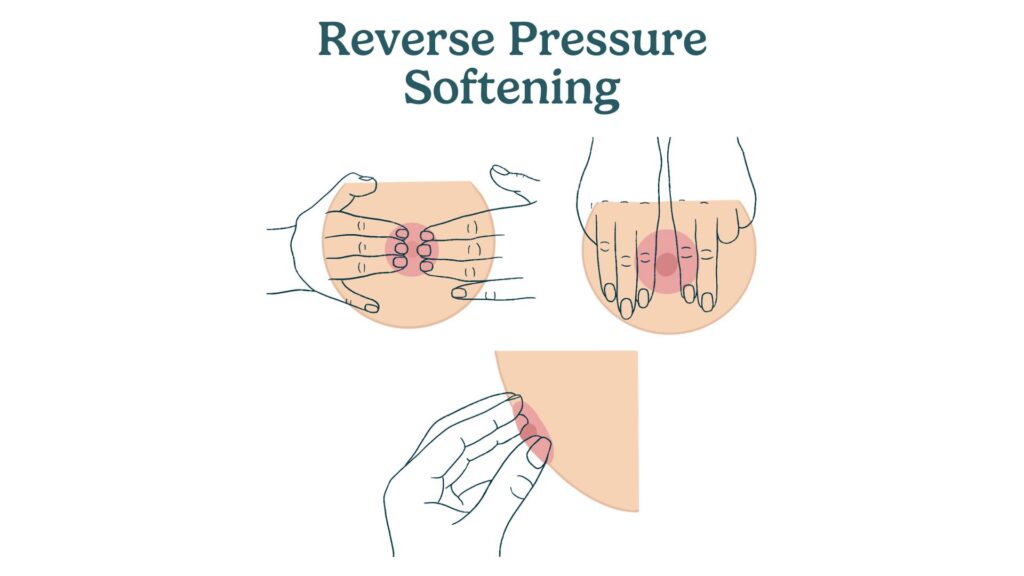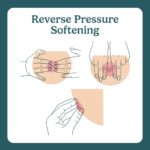reverse pressure softening

Reverse pressure softening
Reverse pressure softening (RPS) is a technique used to soften the areola (the area around the nipple) by gently pressing fluid back into the breast. This method helps make the nipple more pliable and easier for your baby to latch onto, especially if you are experiencing engorgement or swelling.
RPS can be particularly useful in the early days of breastfeeding and helping relieve engorgement when your milk first comes in and your breasts may feel overly full.
During engorgement, the breast can feel tight and firm from swelling, making it more difficult for baby to create or maintain a deep latch on the tissue. Softening the breast where baby will latch will help baby latch deeper, preventing nipple damage and pain, and allowing for better milk removal.
How to perform reverse pressure softening:
When using reverse pressure softening, consider the following:
- Place two fingers on either side of the nipple
- Gently press back toward your chest wall and hold pressure for 20-30 seconds
- You may repeat this in a different position (start with fingers above and below the nipple, then switch to placing fingers on either side of the nipple)
- Latch baby deeply to the breast, ensuring that baby is not just latching to the nipple, but getting the areola in their mouth as well.
What to watch out for
When using reverse pressure softening, consider the following:
- Gentle technique: Ensure you use gentle pressure to avoid discomfort or damage to the breast tissue. The goal is to displace the fluid without causing pain.
- Timing: Perform RPS right before feeding your baby or pumping. This can help your baby latch more easily and reduce nipple pain.
- Proper latch: After softening the areola, make sure your baby latches properly. A good latch helps prevent nipple soreness and ensures effective milk transfer. Learn more about a good latch.
If you experience persistent difficulty with latch or ongoing pain, consult a lactation consultant or healthcare professional for personalized guidance.
Other terms
- Engorgement: When your breasts become overly full of milk, causing them to feel hard and painful. RPS can help relieve this discomfort. Learn more about engorgement.
- Latch: How your baby attaches to your breast for feeding. A proper latch is crucial for effective breastfeeding and can be facilitated by RPS. Learn more about proper latch.
- Areola: The darker area around the nipple. Softening the areola with RPS can make it easier for your baby to latch.
- Let-down reflex: The reflex that releases milk from the alveoli into the milk ducts. Proper latch and reduced engorgement from RPS can help trigger this reflex.


